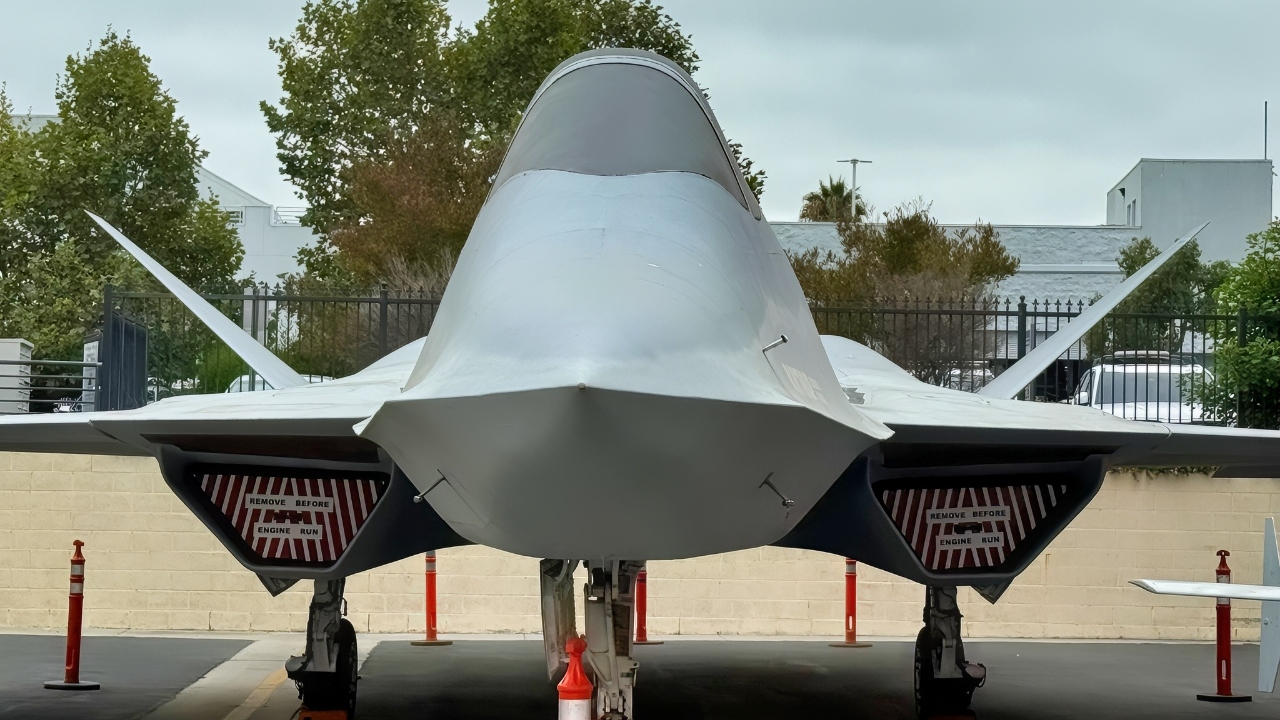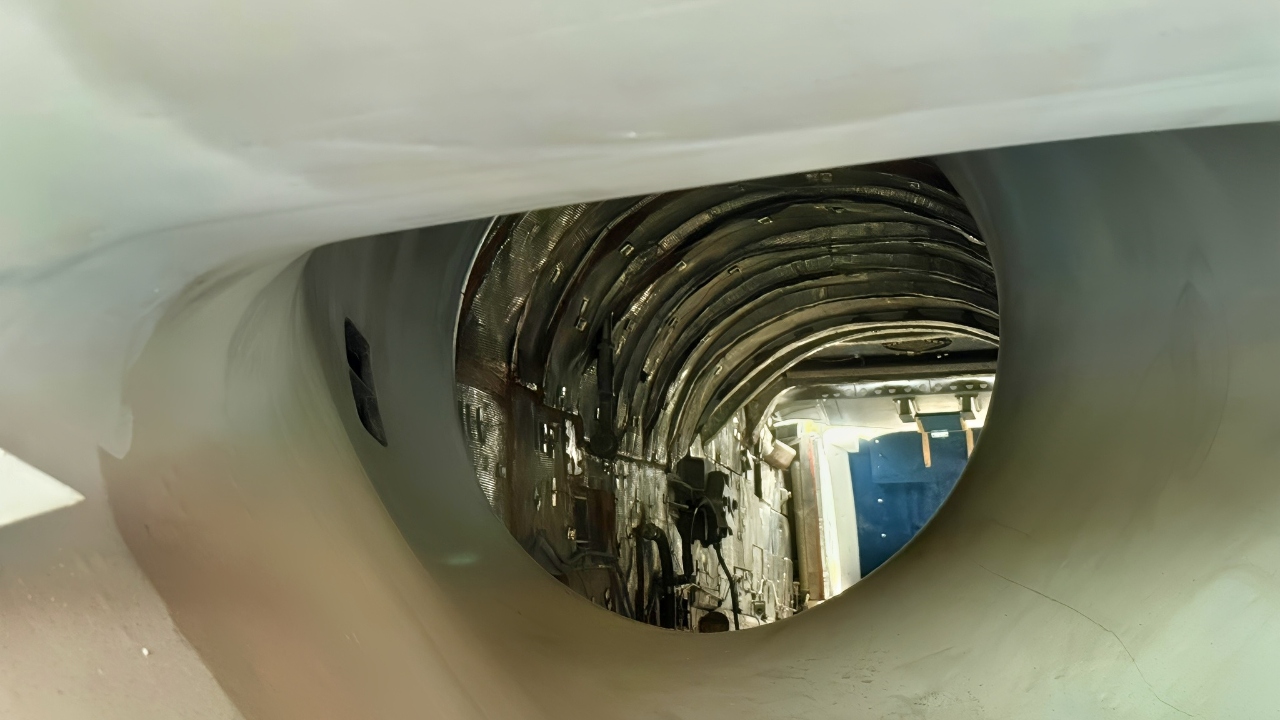PUBLISHED on August 16, 2025, 6:30 PM EDT, Key Points and Summary: The Northrop YF-23A Black Widow II was a revolutionary stealth prototype that competed against the YF-22 in the Advanced Tactical Fighter competition in the early 1990s.
-While the YF-23A was arguably stealthier and possessed a longer range, it lost to the more agile YF-22, which became the F-22 Raptor.
-According to one of the program’s engineers, the decision was not based purely on performance but was influenced by politics and industrial base concerns; specifically, the need to keep Lockheed Martin in the fighter business.
-Despite its loss, the YF-23 remains a legendary example of advanced aerospace engineering.
Meet the YF-23A Black Widow II Fighter
The YF-23A Black Widow II was a demonstrator aircraft designed by Northrop and McDonnell Douglas to participate in the Advanced Tactical Fighter (ATF) competition.
It featured an unconventional design that emphasized stealth above all else. Despite its impressive stealth capabilities, the YF-23 was ultimately rejected in favor of the YF-22, which later became the F-22 Raptor.
Since the ATF competition, numerous debates have arisen regarding whether the Air Force unfairly overlooked the YF-23.
Many, including former engineers on the project, claim that the YF-23 would have been a better fit for the Air Force in the long run.

YF-23A Black Widow II Head On. Image Taken by National Security Journal at the Western Museum of Flight on August 16, 2025.
The YF-23 and the ATF Competition
The U.S. Air Force initiated the ATF program to develop a next-generation air superiority fighter that could replace the aging F-15 Eagle.
The new aircraft needed to incorporate cutting-edge stealth technology, supercruise capability (the ability to fly at supersonic speeds without afterburners), advanced avionics, and superior agility.
Two teams were selected to build prototypes: Northrop teamed up with McDonnell Douglas to produce the YF-23, while Lockheed partnered with Boeing and General Dynamics to develop the YF-22.
Each team built two prototypes, and flight testing began in 1990.
The YF-23A was a radical departure from traditional fighter designs. Its sleek, stealthy profile featured a diamond-shaped wing and a V-tail, often referred to as a butterfly tail. Two prototypes were built: PAV-1, nicknamed “Black Widow II,” powered by Pratt & Whitney YF119 engines, and PAV-2, known as the “Gray Ghost,” powered by General Electric YF120 engines. The aircraft was designed with stealth as a top priority.

YF-23A Black Widow II Stealth Fighter in Torrance
Its smooth, blended surfaces and innovative engine placement helped minimize its radar cross-section.
The exhaust system was shielded and cooled to reduce the infrared signature, making it harder to detect by heat-seeking missiles.
Choosing Stealth Over Maneuverability
Ultimately, YF-23A lost to the YF-22 in April 1991. A combination of technical, strategic, and political factors influenced the decision.
One of the most significant reasons was maneuverability. The YF-22 was more agile, especially in close-range combat scenarios. It featured thrust-vectoring nozzles that allowed it to perform extreme maneuvers, such as the famous “cobra” maneuver.

YF-23A Side View Western Museum of Flight. Image by National Security Journal.
Although the Air Force anticipated that BVR engagements would dominate future air battles, it still valued the YF-22’s superior dogfighting capability, which gave it an edge in perceived versatility.
However, maneuverability was not a requirement for the ATF program. John Shupek, a retired aerospace engineer and one of the engineers who worked on the YF-23A recalled that stealth was the primary requirement the Air Force gave to Northrop and Lockheed for the Program. “The USAF ATF requirements did not require the ATF design to have a lot of agility. The USAF was looking for a stealth fighter that would have a significant time differential between the ATF and the bandit’s discovery of the ATF.”
Shupek added that “Northrop chose stealth over agility to meet the USAF specification… Lockheed did the opposite, they chose agility over stealth for the design of the aft section of their YF-22A.”

YF-23A Black Widow Outside. Taken by Harry J. Kazianis for National Security Journal on August 16, 2025.
Performance and Presentation
Engine selection was another important factor. The Air Force ultimately chose the Pratt & Whitney YF119 engine, which was used in the YF-22 prototype. Although the YF-23’s GE YF120 engine was more advanced and offered better performance, it was also more complex and carried a higher developmental risk.
The Air Force opted for the safer, more proven engine, which aligned with its overall preference for lower-risk solutions.
Presentation and perception also played a subtle but influential role. Northrop’s presentation of the YF-23 was more reserved compared to Lockheed’s aggressive marketing of the YF-22. Some analysts believe that Northrop failed to effectively “sell” the aircraft to decision-makers, despite its technical merits.

Sideview of YF-23A Black Widow II. Image Credit: Harry J. Kazianis/National Security Journal.
In a competition where perception and confidence in the contractor’s ability to deliver were critical, Lockheed’s assertive approach may have made a difference.
In 4 Words: Politics Killed the YF-23A
Political and industrial considerations also played a crucial role. Lockheed had a strong track record with the Air Force, including the successful development of the F-117 Nighthawk stealth fighter.
The Lockheed team’s partnership with Boeing and General Dynamics created a powerful industrial coalition with significant political influence.
Northrop, while respected, had fewer political allies and less recent experience leading a major fighter program. This disparity in political clout and industrial backing may have tipped the scales in favor of Lockheed’s proposal.
However, the real motivation behind the Air Forces decision, according to Shupek was to keep Lockheed around as an aerospace manufacturer.
“The real reason we (Northrop) lost the program was that Lockheed had no new fighter programs at that time, while Northrop had the F/A-18E/F and the B-2.” He adds “It was in the national interest of the U.S. to keep Lockheed alive as an airframer. We were told through unofficial channels after the competition, that our design actually met the specs better than the Lockheed design.” Despite meeting all of the Air Force’s requirements and outperforming the YF-22 in many areas, Lockheed was too important of a manufacturer to lose.
Hindsight is often 20/20. Now that the dust has settled, it seem evident that the YF-23A was a better pick for the USAF and would have been a valuable asset. However, in my opinion, its unfair to judge the Air Force with the benefit of hindsight.
Today, it may seem like an easy choice, but such decisions are often much more nuanced at the time.
With the Cold War still in full force (the collapse of the USSR was unthinkable at the time), and the political necessity of Lockheed Martin, the YF-22 was a logical, and more importantly, safe choice.
YF-23A Fun Fact: The Engines Are Missing
Did you know that the YF-23A at the Western Museum of Flight out in Torrance, California, has no engines? Yes, and the museum staff showed us today on a visit to this warplane the hollowed section where the engines would have been. See the photo below to get an idea of what it looks like inside the YF-23A.

This photo was taken looking inside a YF-23A Black Widow II where the engine was removed. Photo: National Security Journal.
Photo Essay: YF-23 at the U.S. Air Force Museum

YF-23 Black Widow II Fighter Gray Ghost. Image Credit: National Security Journal.

YF-23 National Security Journal Close Up Photo

Northrop YF-23 National Security Journal Photo. Taken on July 19, 2025.

YF-23 Back. Image Credit: National Security Journal.

YF-23 Black Widow II Up Close National Security Journal Photo.
About the Author: Isaac Seitz
Isaac Seitz, a Defense Columnist, graduated from Patrick Henry College’s Strategic Intelligence and National Security program. He has also studied Russian at Middlebury Language Schools and has worked as an intelligence Analyst in the private sector.
Military Matters
The F-22 Raptor Just Keeps Getting Better










